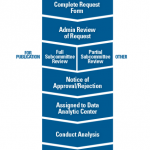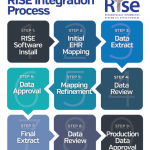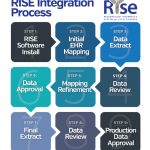
Editor’s note: In November, the ACR honored Joel M. Kremer, MD, MACR, president of the Corrona Research Foundation, with its Distinguished Clinical Investigator Award for his outstanding contributions to the field of rheumatology as a clinical scientist (see story here). As the founder of the Consortium of Rheumatology Researchers of North America (CORRONA, now known as CorEvitas), Dr. Kremer made an indelible impact on how research is shared and real-world insights are gained. Here, he reflects on the genesis of the registry and what he learned along the way.
CORRONA’s Genesis
It’s the late 1990s. I’m a professor and division head at Albany Medical College (AMC), New York. We have a new head of the department of medicine who is a bottom-line guy. He would like me to expand my clinic time to nine, half-day sessions each week.
I like seeing patients but would certainly have liked another full day to focus on research. My research activities and family obligations with two young children had occupied all evenings and weekends for many years. There were overhead funds in college accounts from my studies of methotrexate (MTX), but I was informed these funds were insufficient to free up a day from clinic.
I loved what I was doing, including training fellows, residents and students. But, as we all know, money drives the academic bus. There is simply not enough overhead with clinical grants to buy back personal time to pursue other activities. I recognized that I needed to develop other sources of revenue if there was to be any prospect of opening my schedule.
At this time, there was an early report on the efficacy of etanercept. Would this new agent be the first of a new wave of so-called biologic agents with unique mechanisms of action? What if we could create an organization, a registry, to track the safety and effectiveness of new biologic agents in development as they entered the market? Short-term, randomized, controlled trials (RCTs) are one thing, but rheumatoid arthritis (RA) is a lifelong disease. Inevitable channeling biases in who is included in RCTs also exist.
I reasoned that if an RA registry of these new agents could be created it might be possible to realize revenue while providing much-needed, real-world perspectives on long-term safety and effectiveness. I had no clue what would be involved in getting a registry started. But the idea did have some rather fortunate timely elements going for it.


